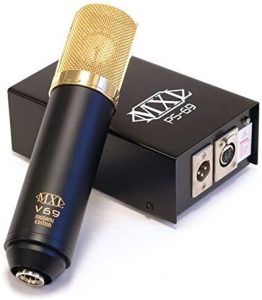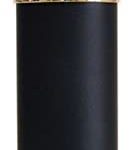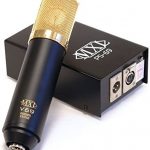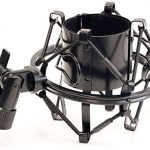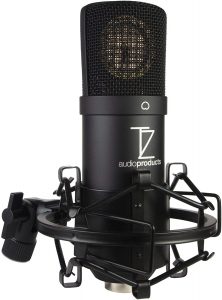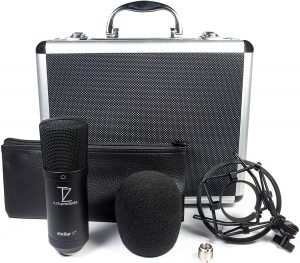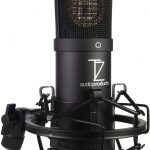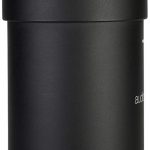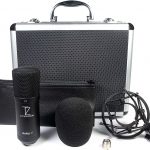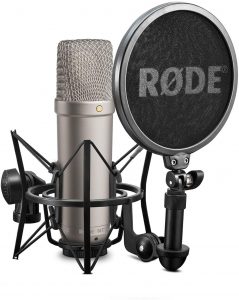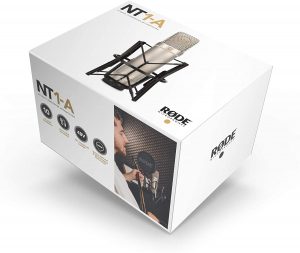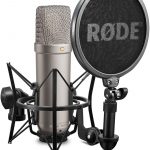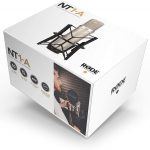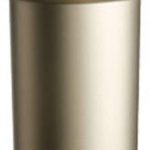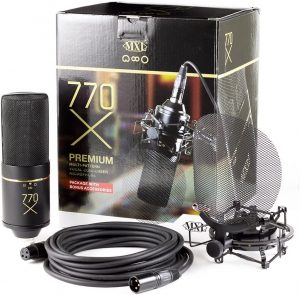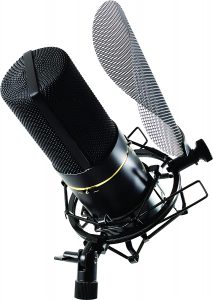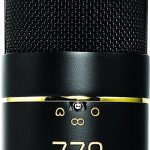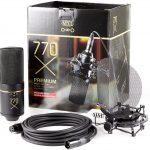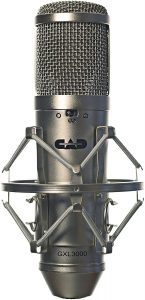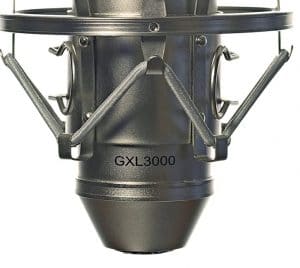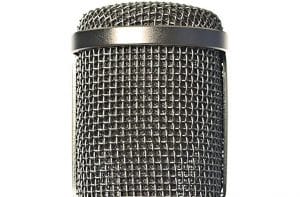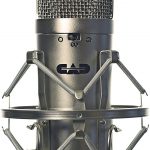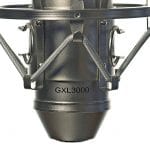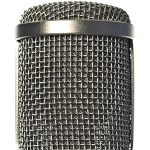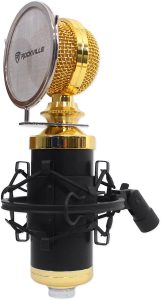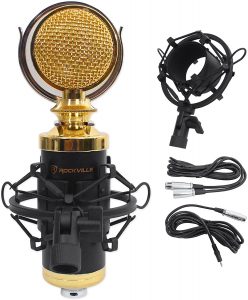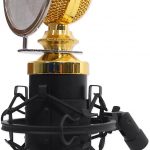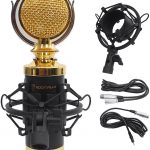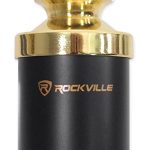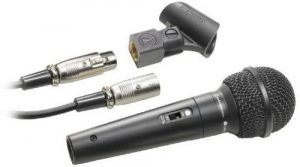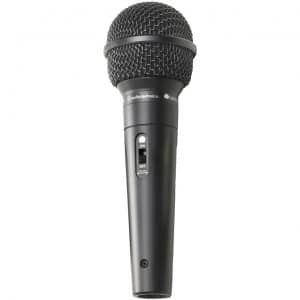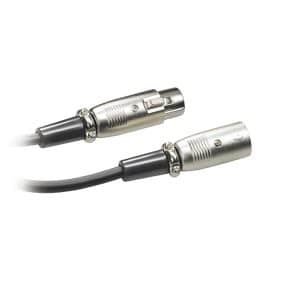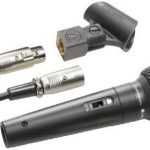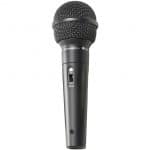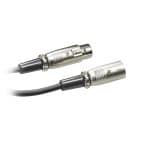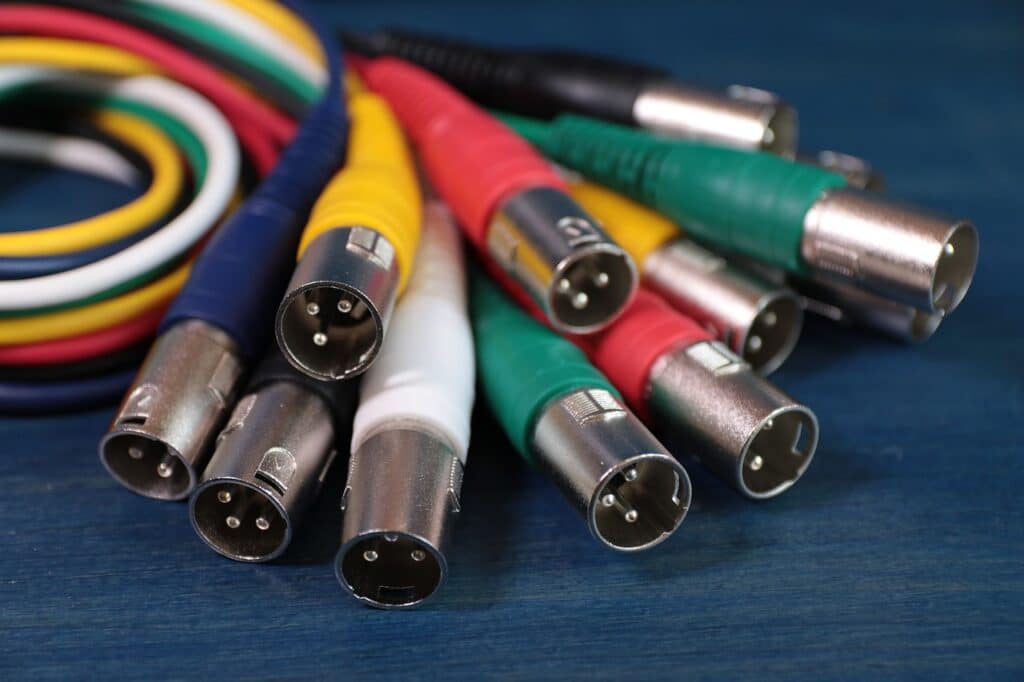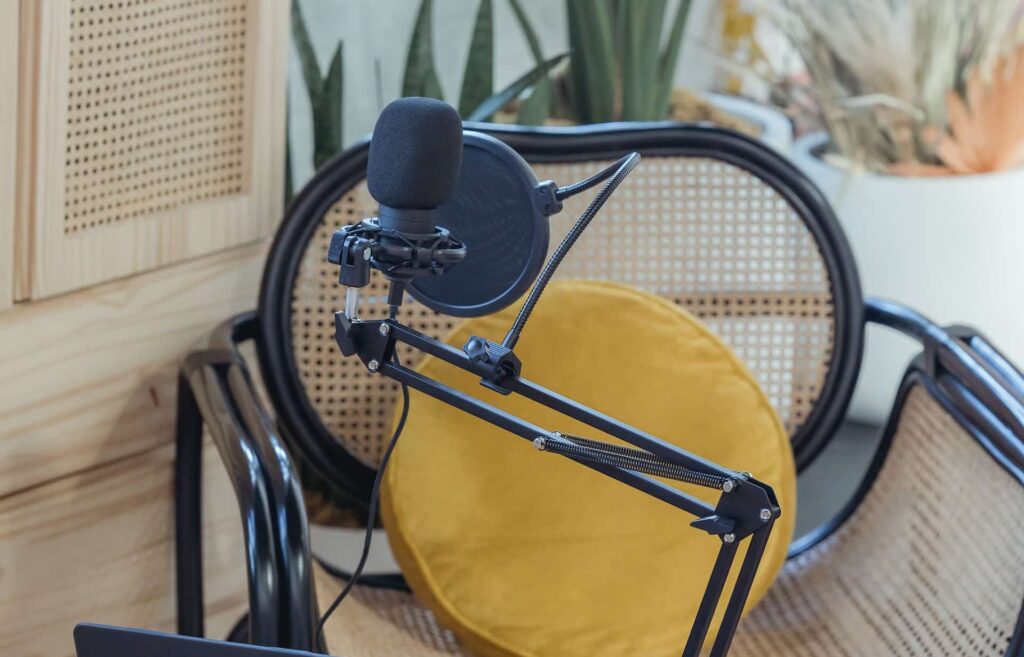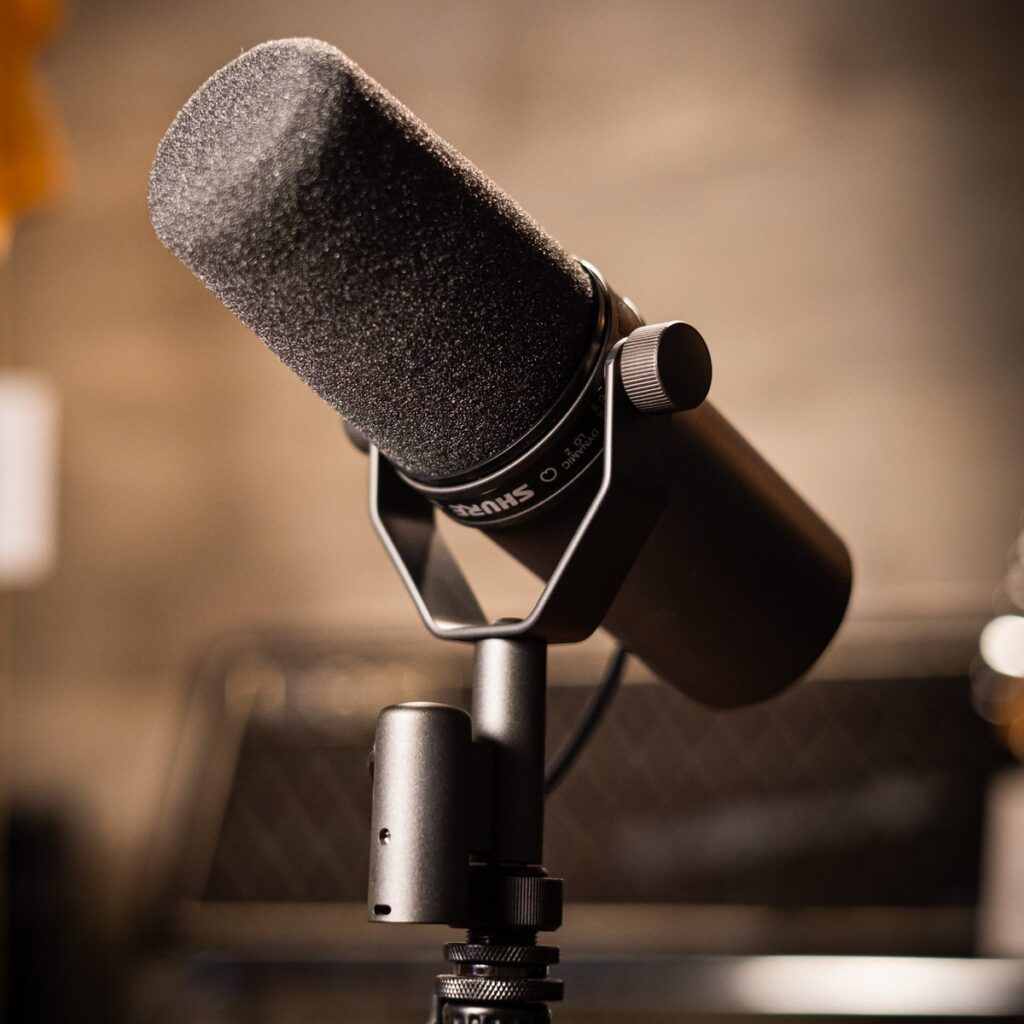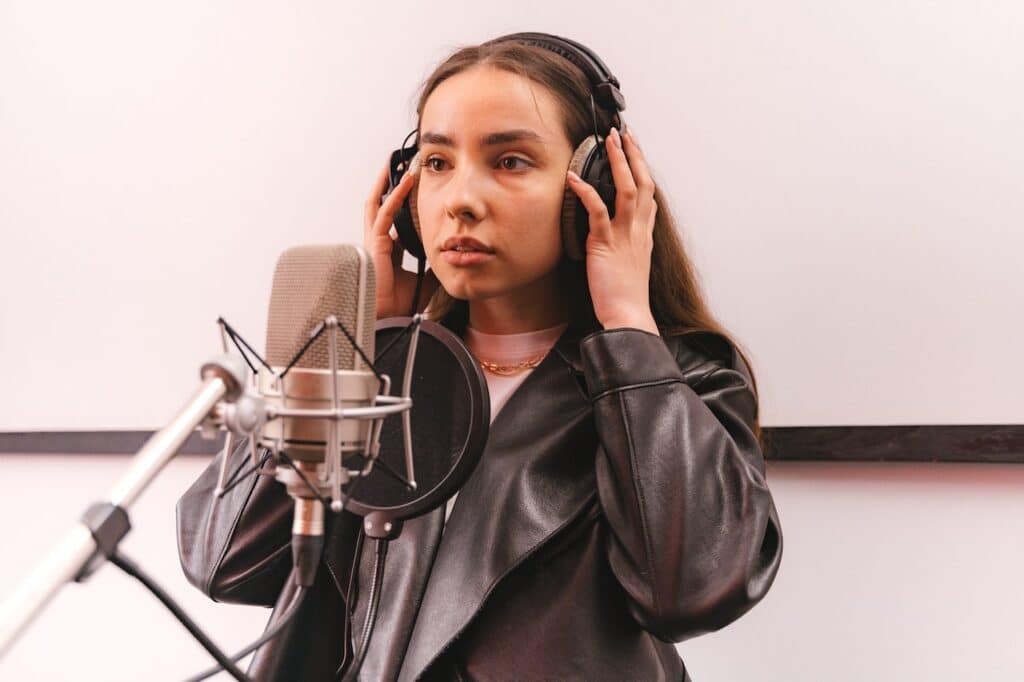Features to consider when choosing a microphone for rapping
In this section, we will take you through everything you need to know to find the best microphone for rapping to suit your needs and style.
Capsule type
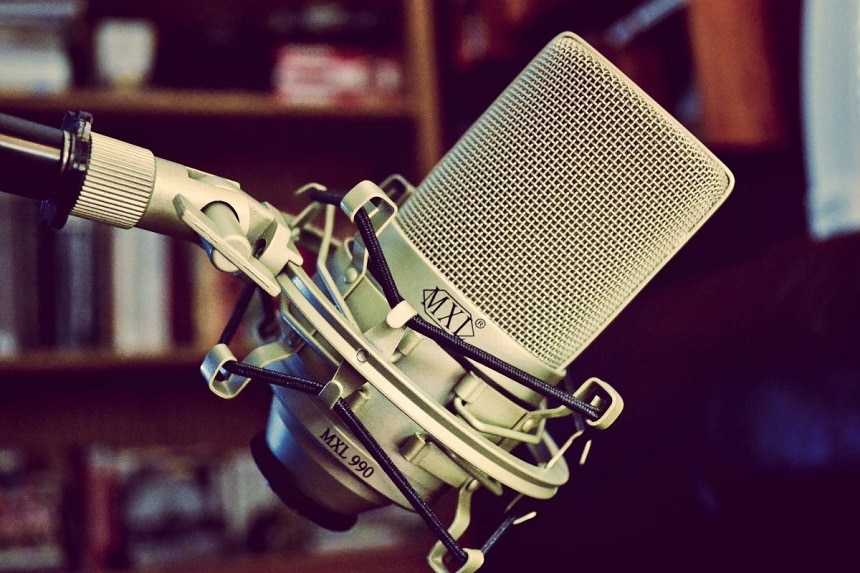
When it comes to finding a microphone, there are two basic types that work best for rapping that you can choose from, which include the following:
- Dynamic – If you close your eyes and think about a microphone, the odds are that you are going to think about a dynamic model. These microphones were the first type ever invented, making them a popular option for many artists. This is especially true for live performers since this type of microphone is outstanding for loud sounds and loud places. They are also a whole lot cheaper than any other type since they don’t require any power to actually amplify someone’s voice. Of course, this type of microphone does have its limitations, as they are not well suited to recording more delicate sounds such as subdued vocals or quiet music. The Audio-Technica ATR-1500 is a great example of this type of mic.
- Condenser – This type of microphone is relatively new, especially when compared to a dynamic model. These mics are great at picking up more subdued and intricate vocals and sounds, which makes them an awesome option for recording in a studio or at home. They are, however, a bit more expensive than dynamic mics and will require their own power source to actually operate. The MXL V69M EDT is an excellent option if you are looking for a condenser microphone.
Frequency range
When we talk about sound, we are usually only worried about decibels, which is how loud or quiet something is. For recording or amplification purposes, however, you need to take another sound measurement into account, which his hertz. Hertz is the measurement of the frequency or pitch of a sound. For people, our auditory range is 20Hz to 20kHz (also known as 20,000Hz). The larger the frequency range of a microphone, the better it is at picking up on different sounds and their pitches, basically. It should be noted, however, that sounds at either end of a microphone’s range will not be recorded or recreated as well as those more towards the center of the range.
If you are in the market for a microphone that can capture the entire auditory frequency range, then the Rode NT1-A-MP or the MXL 770X are going to be your best bets. If, on the other hand, you want to focus in on a certain frequency range, then the CAD Audio GXL3000 is a good option.
Polar pattern
Basically, the polar pattern of the microphone is the direction that it can record sound from. This is an important consideration, especially if you are just setting up your recording studio. You want to make sure that you get a model that works with your setup. There are several different options out there, which include:
- Cardioid – Though the name sounds complicated, these types of microphones are also known as directional mics. These microphones are great for studios since they are most sensitive to anyone facing the mic while excluding sounds from behind it. They also have a reduced sensitivity to any sounds coming to form the sides.
- Figure-of-eight – These microphones allow for more than one person to record at a time, as they pick up sounds in a figure-eight pattern on either side of the microphone.
- Omnidirectional – As the name would suggest, these microphones are equally sensitive in any direction. This makes them an excellent option for a live recording session where you have rappers and musicians working together.
- Combination – If you are an artist who likes to experiment with different sounds and techniques, then this style of microphone might be the right option. Combination mics allow you to switch between different polar patterns with the flip of a switch, which will make it that much easier to fine-tune your style and sound.
Equivalent self-noise
Anything that uses electricity to operate is going to create a bit of noise itself. Some microphones, however, create less background noise than others. When you are recording, especially if you are looking for your mic to pick up on lower dB sounds, you need to make sure that you have a model with a lower equivalent self-noise. Otherwise, your recordings might be distorted.
In basic terms, the lower the self-noise, the less you will have to worry about unwanted alterations to your recording vision. If that is what you are looking for, then the Rode NT1-A-MP is a good choice. It has an equivalent self-noise level lower than 5dBA, which is the lowest on the market. This makes it a great choice for keeping your recordings limited to only what you want.
Sensitivity
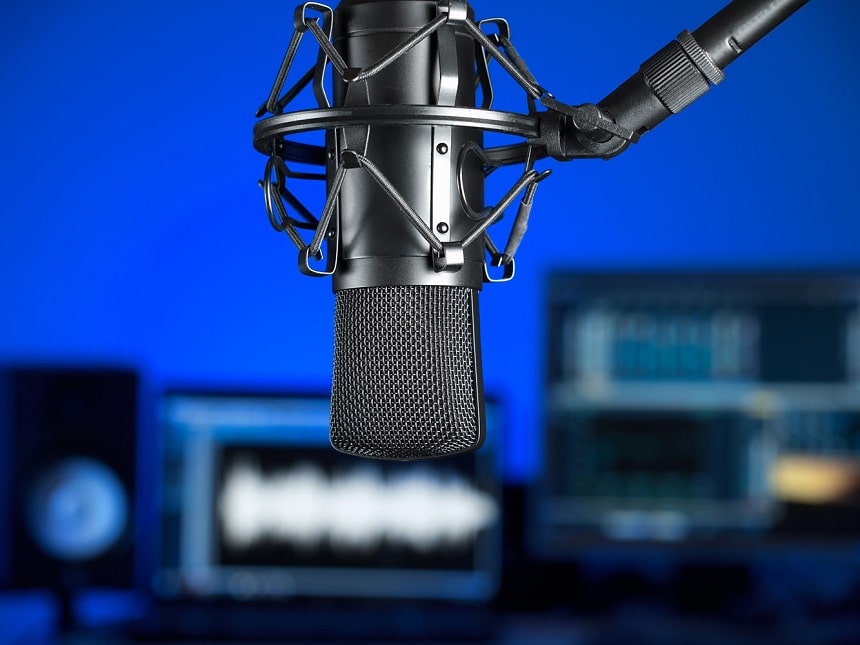
As the title would suggest, the more sensitive a mic, the better it is at picking up on sounds and amplifying them. When exposed to the same sound source, different mics will produce different output levels based on their sensitivity. The higher the sensitivity, the less pre-amplification you will need to bring the sound to a useable level for a mixer. The less the sensitivity, the more pre-amplification you will need.
Any condenser style microphone will do a good job of picking up on any and all sounds that you want to hear in your recordings. Perhaps the best model is the MXL 770X, which has a -35dB rating. This rating makes it a good option for picking up lower-level sounds without having to use a preamp in the recording process.
Impedance
In audio terms, impedance is the AC resistance of audio signal voltages. In the case of a microphone, you need to make sure that the impedance matches or is lower than the input impedance of the preamp. This output and input are measured in ohms. A professional mic’s impedance should be in the range of 50 ohms to 500 ohms. Some mics might have an impedance outside of this range, so you just need to be sure that the output impedance is lower than the load impedance. That way, you will get the right level of sound input and output you desire.
The MXL V69M EDT has an impedance rating of 200 ohms, which puts it directly in the middle of the range listed above. This will help to make it easier to get a preamp that works well with the microphone since it should be compatible with more models. Of course, if you want a mic with a higher impedance rating, then the Audio-Technica ATR-1500 and its 500-ohm rating are the perfect picks. If you desire a lower impedance rating, then the Rode NT1-A-MP, which is rated at 100 ohms, is a good option.
Output connectors
When searching for any new sound recording equipment, you cannot just consider each piece on its own. A recording system is just that, a system. In order to use it correctly, you need to be sure that all of the different components can connect with each other and “communicate” correctly. Otherwise, you will have a tough time putting down your tracks and creating your vision for your next rap album or recordings. As such, you need to carefully consider the different connectors that you are going to use for your microphone so that it connects correctly to the rest of your setup.
If you are just getting started, then you can get any type of connector that you desire. You just need to make sure that all of the other equipment you buy works with your connector type of choice for your microphone. On the other hand, if you are adding a new microphone into an existing system, you need to search for a model that uses the same type of connector. Otherwise, you will need to purchase a separate connecting cable. While this isn’t the biggest deal, it will add a bit more to the purchase price. You need to bear that in mind before you make your final decision.
Dimensions
One of the last but still important considerations you need to think about with your new microphone is the overall dimensions. Depending on the amount of room you have to record, you will need to be sure to get a model that fits your space. Obviously, if you have a larger area, this will be less of a consideration than if your recording booth is limited in its size.
If you have a smaller space to keep all of your equipment, then you will want to shoot for something like the CAD Audio GXL3000 would be a good option. Since it doesn’t take up a ton of space, you can easily fit it into a smaller recording studio.








